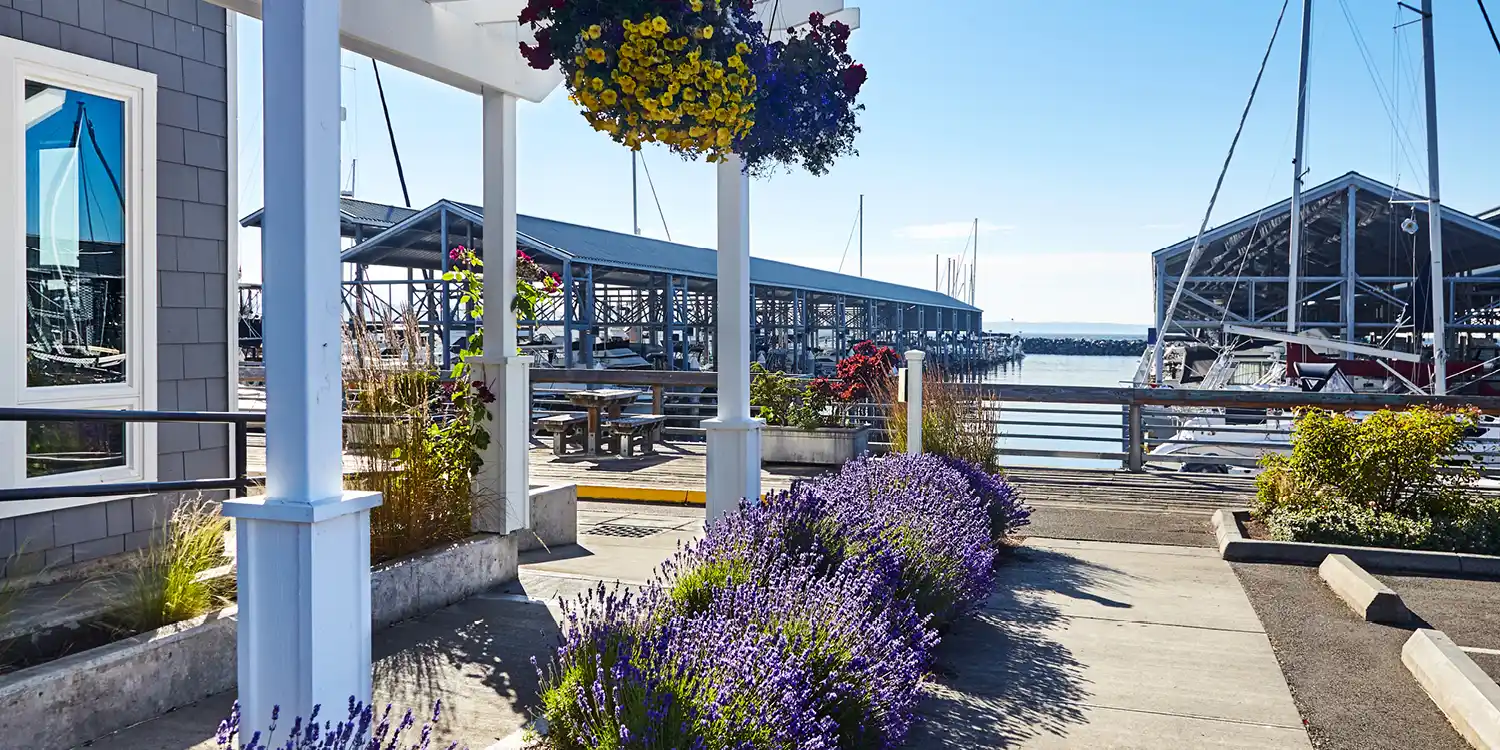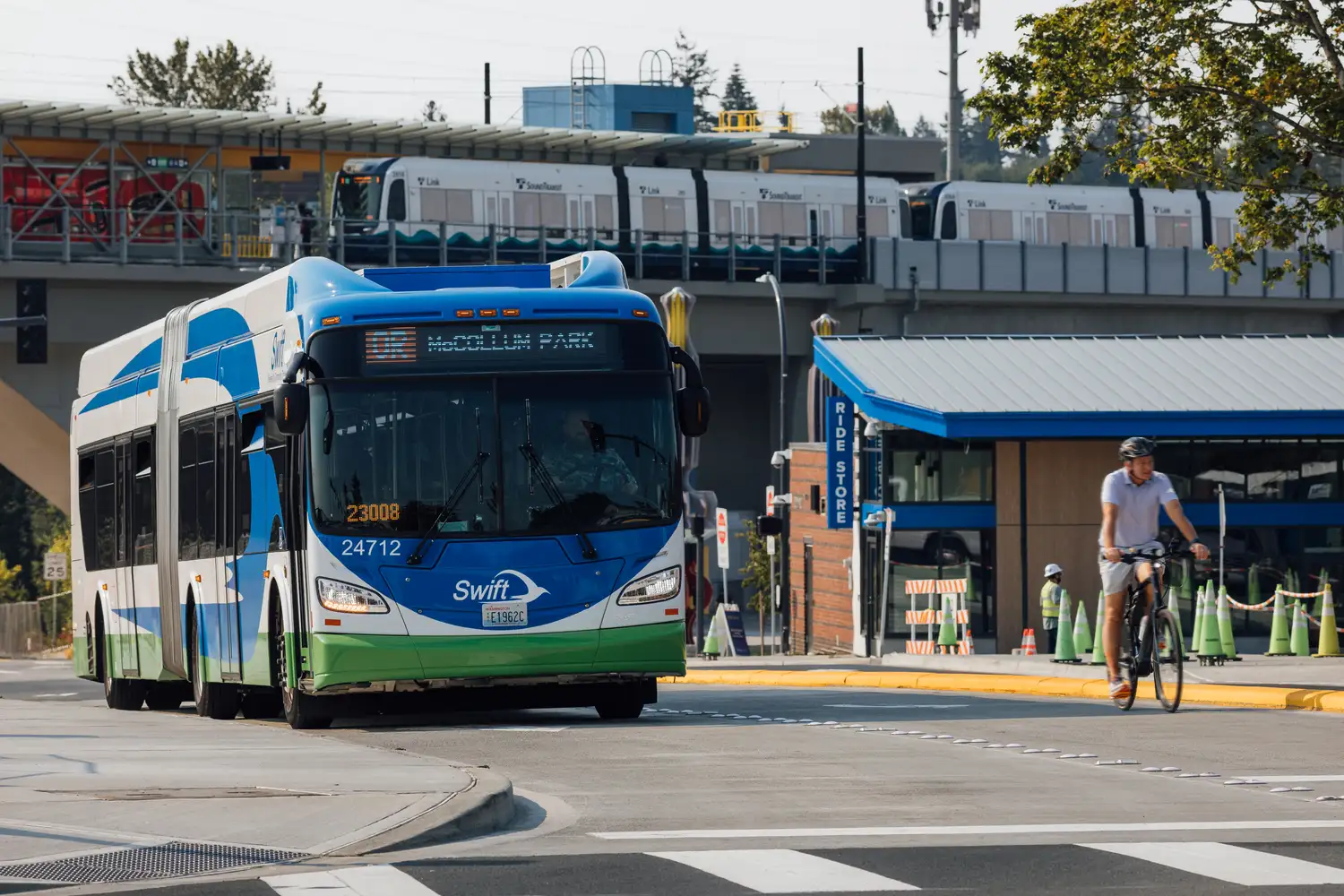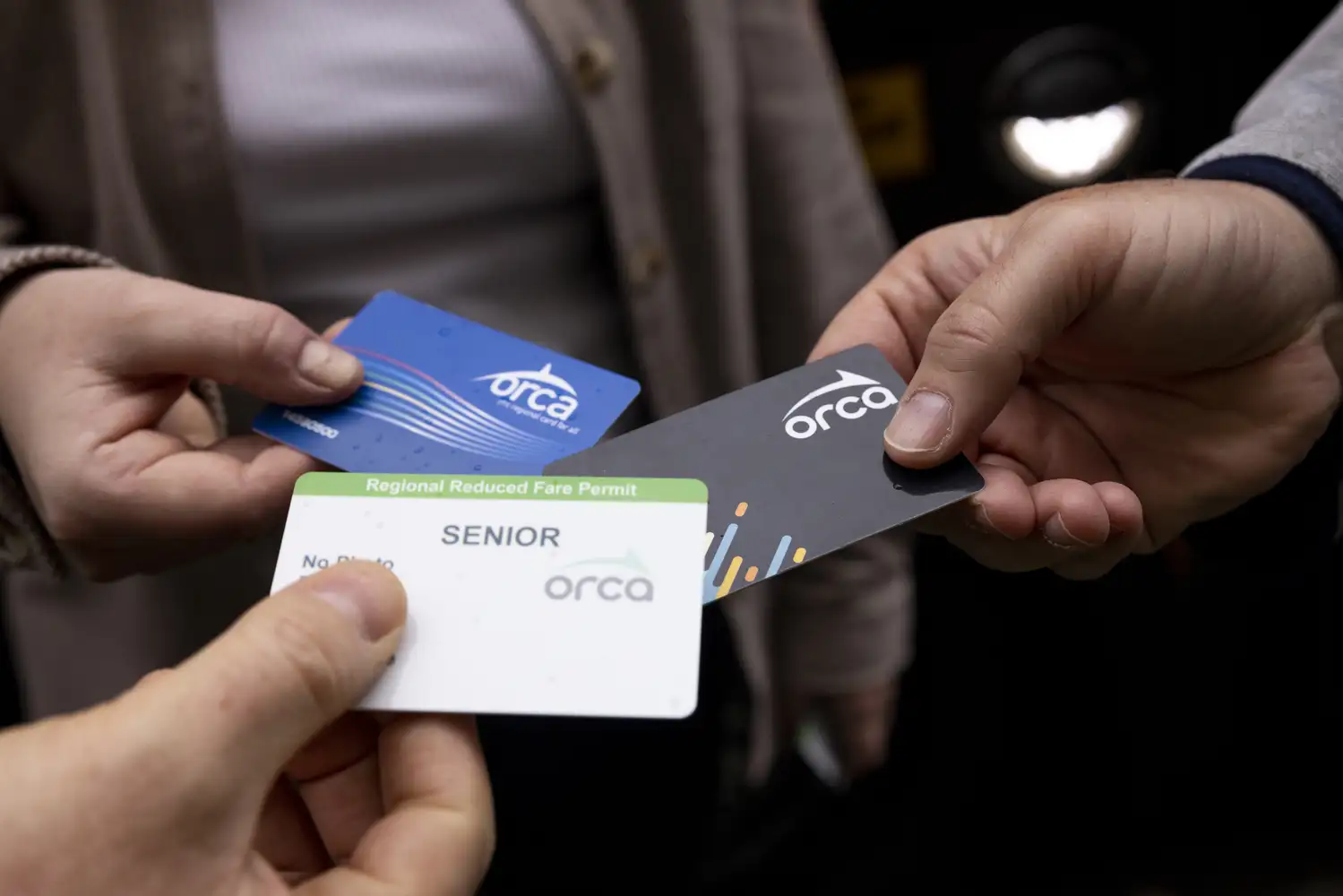Getting around Edmonds with Community Transit

Community Transit is here to get you where you want to go. We are proud to be a part of the Edmonds community — we live here, ride here, and drive here. Wherever you need to go in Edmonds, feel good about how you get there.
About Edmonds
When you ride Community Transit in Edmonds, enjoy scenic waterfronts, vibrant downtowns, and easy connections to light rail. People traveling to and within Edmonds can choose from multiple routes served by Community Transit buses, including Swift Blue Line and Swift Orange Line bus rapid transit.
Other local transit options include a ferry station with regular ferries running between Edmonds and Kingston, the Sounder Train, Sound Transit buses, DART paratransit service, and Vanpool. Edmonds Ferry Terminal, Edmonds College Transit Center, Edmonds Park & Ride, Swamp Creek Park & Ride, Lynnwood City Center Station, and Mountlake Terrace Transit Center serve as nearby transit hubs. Local bike trails in Snohomish County also offer pedestrian and bike-friendly travel options.
-

Connect to light rail
Enjoy seamless connections to light rail to get to Seattle and beyond.
Light rail connections -

How to ride
New to Community Transit? We can help you get moving.
How to ride the bus -

Fares & Passes
Learn all the ways to pay your fare using an ORCA card and more.
Learn about fares & passes
Popular Destinations
Explore Edmonds with Rick Steves
Come explore the idyllic city of Edmonds, Washington‘s first Certified Creative District. Catch a Community Transit bus downtown to explore the rich art scene and extensive dining and retail options. Explore the picturesque waterfront and connect to regional transit via the ferry or Sounder Train.







